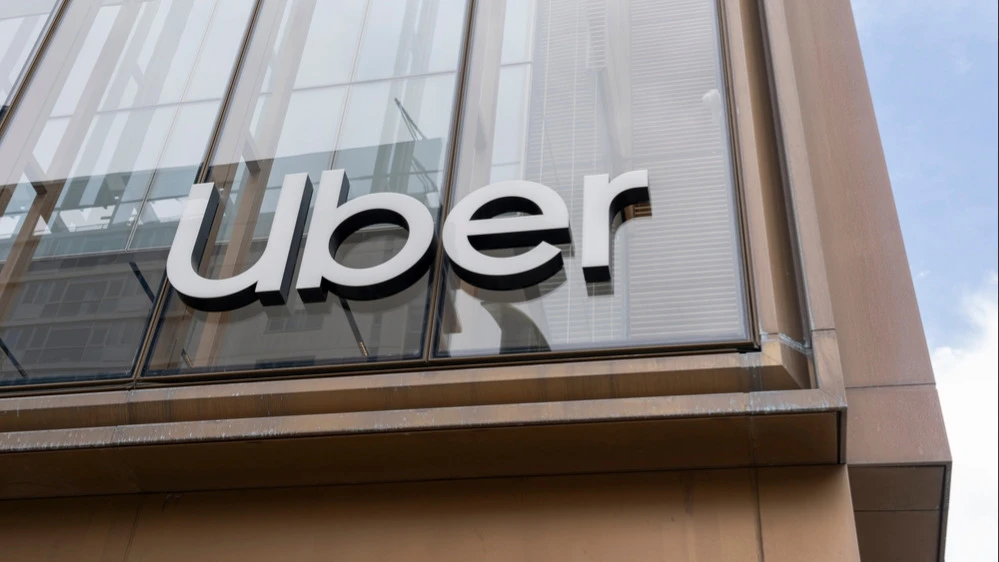Uber's strong report was not enough to boost its stock. What spooked investors?
The market remains concerned about whether the development of autonomous cabs is a threat to Uber

Cab and food delivery service Uber exceeded Wall Street's expectations for revenue and profit in the second quarter. However, this was not enough to inspire investors: Uber's shares fell by 3.5% after the publication of the report. Investors are afraid of competition from robot cab services: to resist them, Uber has to make significant expenditures, writes Barron's.
Details
Uber's second quarter revenue increased 18% year-on-year to $12.65 billion. The company beat expectations comfortably, with analysts polled by LSEG predicting $12.46 billion, reports CNBC. Adjusted EBITDA (earnings before interest, taxes, depreciation and amortization) was a record $2.12 billion versus analysts' consensus forecast of $2.09 billion, reports Bloomberg. Net income rose 33% to $1.36 billion, or $0.63 per share, in line with Wall Street expectations.
The company attributed the strong results in part to synergies between its core businesses of ridesharing and delivery. Uber CEO Dara Khosrowshahi noted that 12% of annual orders in the delivery segment (worth $10 billion) are generated through the Eats tab in Uber's main app for calling cabs, Bloomberg reports.
"At this point, we're not seeing any signs of weakness on the consumer side," Uber CEO Dara Khosrowshahi announced on CNBC. - The situation is stable, and that's great news for Uber."
But despite the strong report, investors were selling the stock on Wednesday: the securities in the course of trading decreased in price by more than 3.5% - to $86.3. However, then the securities began to recover losses and by the time of publication of this text were declining by about 0.7%.
What the market fears
The strong report was overshadowed by investments by Uber to counter competition from robotaxi services, accounts Barron's. The market is still evaluating whether the growth of the autonomous cab segment from companies like Tesla is a threat or an opportunity for the on-demand ride-hailing market leader, the publication notes.
Last month, Uber announced that it was investing $300 million in electric car maker Lucid in a partnership aimed at launching robotaxis next year and building a fleet of 20,000 autonomous vehicles within six years.
Investors fear that Uber's business model may change from an aggregator to a direct fleet owner. Planned investments in such partnerships may have been one of the reasons for Wednesday's drop in quotations, Barron's suggests.
"Given our cash flow and capital allocation structure, we can afford to invest aggressively in the autonomous transportation space. And in doing so, return significant funds to shareholders," Khosrowshahi said in a conference call with analysts, making a reference to Uber's new $20 billion buyback program.
Should we fear competition with robotaxis?
There are no signs yet that emerging robotaxi services are taking away Uber's share, emphasizes Barron's. The number of trips for the quarter grew by 18% to 3.3 billion, the number of active users of the platform - by 15%, and gross bookings (gross bookings - paid orders, including the income of drivers and salespeople without tips) grew by 17% to $46.8 billion. According to Bloomberg calculations, the company's forecast for the current quarter assumes acceleration of growth of gross bookings to 18-21%.
"Consumer demand remains strong as Uber shares the benefit of lower insurance costs with customers. As a result, we're seeing an acceleration in ride growth," quotes Barron's quoted William Blair analyst Ralph Shackart as noting. - U.S. ride growth is projected to accelerate further in the next quarter - proving Uber's ability to scale the business." Shackart reiterated an Outperform rating on Uber's stock, but did not specify a target price.
Following the report, Stifel analyst Mark Kelly lowered his target price on Uber shares from $117 to $116, maintaining a buy recommendation on them.
In total, according to MarketWatch, of the 57 analysts tracking shares of the cab service, 45 of them recommend buying (Buy and Overweight ratings), while the remaining 12 advise holding the stock in a portfolio (Hold). The Wall Street consensus target price is $101.2 per share, up 13% from the close on Tuesday, August 5th.
This article was AI-translated and verified by a human editor
